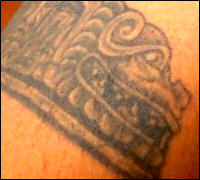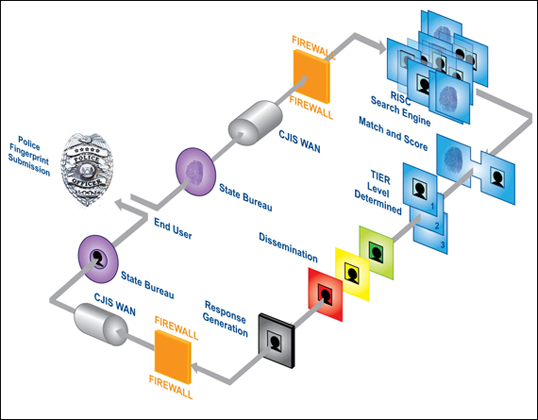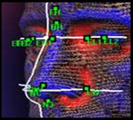|
Next
Generation Identification |
Vision
 Driven
by advances in technology, customer requirements, and growing demand for Integrated
Automated Fingerprint Identification System (IAFIS) services, the FBI has initiated
the Next Generation Identification (NGI) program. This program will further
advance the FBI’s biometric identification services, providing an incremental replacement
of current IAFIS technical capabilities, while introducing new functionality.
NGI improvements and new capabilities will be introduced across a multi-year
timeframe within a phased approach. The NGI system will offer state-of-the-art
biometric identification services and provide a flexible framework of core capabilities
that will serve as a platform for multimodal functionality. A full and open competition
was used to award the NGI contract to Lockheed Martin Transportation and Security
Solutions. This multi-million dollar contract will consist of a base year and
the potential for up to nine option years. Driven
by advances in technology, customer requirements, and growing demand for Integrated
Automated Fingerprint Identification System (IAFIS) services, the FBI has initiated
the Next Generation Identification (NGI) program. This program will further
advance the FBI’s biometric identification services, providing an incremental replacement
of current IAFIS technical capabilities, while introducing new functionality.
NGI improvements and new capabilities will be introduced across a multi-year
timeframe within a phased approach. The NGI system will offer state-of-the-art
biometric identification services and provide a flexible framework of core capabilities
that will serve as a platform for multimodal functionality. A full and open competition
was used to award the NGI contract to Lockheed Martin Transportation and Security
Solutions. This multi-million dollar contract will consist of a base year and
the potential for up to nine option years.

NGI will be the cornerstone that enables CJIS to
meet its growing and evolving mission and continue to build its reputation
as a global biometrics leader.
NGI Program Mission and Goals:
The NGI Program Office mission is to reduce terrorist and criminal activities
by improving and expanding biometric identification and criminal history
information services through research, evaluation, and implementation of
advanced technology within the IAFIS environment.
Its goals are as follows:
-
Public Safety and National
Security
-
Biometric Leadership
-
Efficiency Improvements
-
Privacy and Data Protection
-
Smooth Transition
NGI is a collaborative effort
among the Bureau, the CJIS Advisory Policy Board and members of the
Compact Council, comprised
of local, state, federal, and international representatives.

Drivers and Requirements:
-
Flexibility
-
Capacity
-
Accuracy
-
Response Times
-
Additional Functionality
-
Interoperability
-
Availability
-
Quality Check Automation
The Quality Check function of IAFIS is one of the first steps in IAFIS
ten-print processing in which textual information is reviewed. At one
point in time 98% of all transactions required a manual review. As
of July 1, 2007, Auto QC was implemented. The QC Automation capability
has eliminated the manual review of the majority of fingerprint transactions.
Approximately 15% still require a manual review. This automation has
provided our customers with faster response times and more consistent
processing decisions. Just to give you an idea of how QC affects response
times, the average processing time with QC automation is approximately
.7 seconds, as opposed to a manual QC processing time of 16.1 seconds.
-
Interstate Photo System Enhancements
 Currently,
the IAFIS can accept photographs (mugshots) with criminal ten-print
submissions. The Interstate Photo System (IPS) will allow customers
to add photographs to previously submitted arrest data, submit
photos with civil submissions, and submit photos in bulk formats.
The IPS will also allow for easier retrieval of photos, and include
the ability to accept and search for photographs of scars, marks,
and tattoos. In addition, this initiative will also explore the
capability of facial recognition technology.
-
Disposition Reporting Improvements
The NGI Program will provide a variety of options to increase the submission
of disposition data. These options will include the electronic submission
of disposition data via the Interstate Identification Index, the CJIS
Wide Area Network, CD-ROM and other standard media, and potentially
through a direct connection to federal courts. A portion of this modernization
began on September 2, 2007.
-
 Advanced Fingerprint
Identification Technology Advanced Fingerprint
Identification Technology
Advanced Fingerprint Identification Technology will provide faster,
more efficient IAFIS identification processing, increased search
accuracy, improved latent processing services, and allow for seamless
searches of ten-flat fingerprint impressions for noncriminal justice
purposes.
(See below tables for IAFIS and NGI response times.)
| Electronic Ten-Print Response Times - IAFIS |
| |
Criminal |
Civil |
| Response Time |
2 hours |
24 hours |
| Completion Rate |
97.6% |
98.8% |
| Electronic Ten-Print Response Times - NGI |
| |
Criminal |
Civil |
| High |
10 minutes |
15 minutes |
| Routine |
30 minutes |
2 hours |
| Low |
24 hours |
24 hours |
| Non-Urgent |
15 days |
15 days |
The Repository for Individuals of Special Concern
(RISC) provides law enforcement and
partnering agencies with rapid/mobile identification services
to quickly assess
the
level of threat
that an encountered individual poses. Using a minimum of two or a
maximum of ten
fingerprint
images-flat or rolled-RISC currently conducts an automated
search against a limited
population
of approximately 2 million records. Currently
the records include:
• Wanted Persons
• Sex Offender Registry Subjects
• Known or Suspected Terrorists
Current RISC responses
include the Red/Yellow/Green flag, the
category of hit, the FBI number, the master name and the response caveats.
The RISC
Rapid
Search supports multi-tiered
enrollment and
dissemination policies and maintains unique
identities
for the individuals enrolled
in the repository.
(See diagram below.)

-
Enhanced
IAFIS Repository
 Redesign
of the IAFIS criminal and civil history repository
will improve the overall effectiveness of
the IAFIS, develop new and
streamline existing internal user processes, and provide
new search and response
services
to
the FBI’s customers. The
Enhanced IAFIS Repository will
offer a new “Rap
Back” service allowing authorized
agencies to receive notification
of subsequent criminal
activity reported to
the IAFIS on individuals
holding positions of trust. Additionally,
modifications will be made to incorporate
multimodal biometric identification
capabilities for future needs.
Iris
Repository: This repository will
provide the submission of
Iris data, provide retrieval
capability,
provide Iris search capability,
and provide Iris maintenance capability.
-
 FBI National
Palm Print System FBI National
Palm Print System
The NGI Program
will include the capability for the IAFIS to accept,
store, and search palm print
submissions from local, state,
and federal law enforcement and criminal justice
agencies.
The National Palm Print System
will provide a centralized
repository for palm print
data
that can be accessed nationwide,
providing our customers with
an additional
tool to solve crimes.
Multimodal Biometrics
 The future
of identification systems is currently
progressing beyond the dependency of a unimodal (e.g., fingerprint)
biometric identifier towards multimodal
biometrics
(i.e., voice, iris, facial, etc.).
The NGI Program
will advance
the integration strategies and indexing of additional biometric
data
that will provide
the framework for a
future multimodal system that
will facilitate
biometric fusion identification
techniques. The framework will be expandable,
scalable, and flexible to accommodate new technologies
and biometric
standards, and will be interoperable with existing systems. Once
developed
and implemented,
the NGI
initiatives and multimodal functionality
will promote
a high level of information
sharing, support interoperability,
and provide a foundation for using multiple
biometrics
for positive identification.
Stakeholder Concept
After the six NGI
capabilities were identified, the FBI wanted to ensure the IAFIS user
community
was canvassed to provide additional
input.
A study contractor, IntelliDyne, worked with the FBI to validate
current stakeholder
requirements, and to identify any additional requirements.
193 agencies representing over 1,000 individuals
were contacted. These
groups included
State Identification Bureaus, State Crime Labs, Federal Agencies,
Authorized Non-Criminal Justice Agencies, and some Special Interest
Groups (NIST,
SEARCH). As a result of this canvass, two new areas of high
interest were discovered:
multimodal framework within IAFIS and additional latent functionality.
NGI
Privacy Considerations
Privacy considerations have been
built into NGI. NGI developed a privacy threshold analysis
in June 2006. A Privacy Impact Assessment for the Interstate Photo System has been completed to assess NGI compliance with the Privacy Act. The System
of
Records
Notice is being
updated to reflect NGI capabilities. NGI also has continued
involvement with the CJIS Advisory Policy Board and
the Compact Council.
Resources
Contacts
Biometrics Services Section Customer
Service: 304-625-5590
 
CJIS Home
|
|


